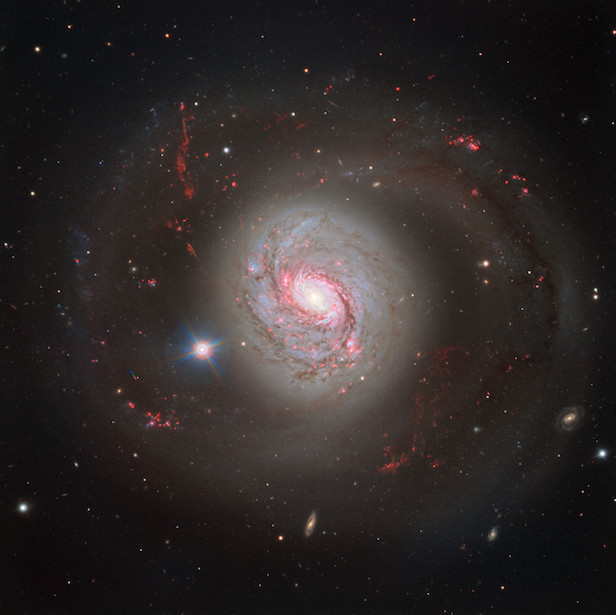Very Large Telescope captures dazzling heart of active galaxy
The European Southern Observatory instrument has caught a remarkable image of Messier 77

M77 (also known as NGC 1068) lies 47 million light years away from us, in the Cetus constellation. Image credit: ESO
The stunning spiral galaxy, named Messier 77, has a range of wonders, ranging from the darkened dust trails in the arms to the blistering bulge at its vibrant centre. What makes this galaxy so special is that it’s one of the most active and closest galaxies to us, with the nucleus outshining the rest of the structure.
Using the Focal Reducer and Low Dispersion Spectrograph 2 (FORS2) instrument on the VLT, the galaxies have been captured in a range of wavelengths represented by a range of colours. For example, the hydrogen-alpha emission is shown in pink, and this is an indication of extremely hot and young stars formed in the spiral arms.
This particular active galaxy is known as a Type II Seyfert, which emits radiation of all kinds. What makes this so powerful is that at the centre of this galactic beast is a supermassive black hole, constantly being fed from by the dusty accretion disc that circles it.
Keep up to date with the latest space news in All About Space – available every month for just £4.99. Alternatively you can subscribe here for a fraction of the price!




